I reviewed two of the many exhibitions and events at the interesting Nour Festival of Arab culture as at www.rbkc.gov.uk/subsites/nour.aspx for the Festival Blog... The Festival (20 Oct - 8 Nov 2015) has finished, but both these shows run on to late November and are well worth visiting.
Marwan: Not Towards Home But The Horizon
Marwan Kassab-Bachi, Untitled, 2014
The Mosaic Rooms, a well-appointed privately funded institution, makes an excellent showcase for the work of the Syrian painter Marwan Kassab-Bachi,
generally known just as Marwan. Based in Berlin since 1957, he settled
in Germany by chance but is now well integrated into German society.
In fact, fellow student Georg Baselitz
is a more obvious influence on his artistic development than any Arab
forebears. Marwan has children with his German wife, and became the
first Arab member of the prestigious Akademie der Künste
in 1994. That said, Marwan has kept in touch with his roots in
Damascus, and his paintings might be seen as applying western modernist
methods to Oriental concerns.
The exhibition is spread out over three rooms: the first contains
seven large oil paintings of semi-abstracted heads, the subject on which
Marwan has concentrated for the past forty years; the second is
dedicated to the series of etchings 99 Heads; while the third
gives fascinating background material through paintings from the 60s,
recent works on paper, and sketchbooks. The large untitled examples
shown are from 1977, 1987, 1992, 2001, 2019, 2010 and 2014. The
earliest has a more clearly delineated head, and established more volume
than the flattened planes of the later works – though, even they retain
a ghostly echo of the cubist language which sought decidedly opposite
ends. Longer-term, there is a move from the dark, dense, multi-layered
build-up of paint towards a more open, fluid, brighter and thinner
application, becoming gradually more lyrical as we move through to this
century’s work.
The faces aren’t hard to perceive, given the brain’s pareidolian
instincts, but they are abstracted enough to come in and out of focus,
so that image and surface take turns at the front of our perceptions.
This to and fro imparts a restless energy, which might suggest ‘inner
faces depicting mental conditions always in flux’, in Jőrn Merkert’s
words. This leads to the question: what conditions are being expressed
here? You might say that Marwan uses the face merely as a ground for
abstraction, were it not that the face is such a strong subject that it
almost automatically picks up an existential aspect. The titles of
Marwan’s shows have tended to play on this: ‘Topographies of the Soul’
preceded ‘Not Towards Home, But The Horizon’. Merkert is in no doubt:
‘Marwan is obsessed by faces because for him they are a means of
expressing the dramatic depth of life.’
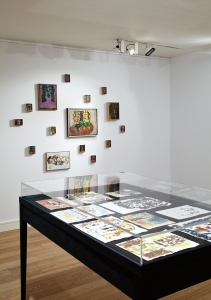 |
| Installation shot |
Such readings are in tune with the fragmentary presentation of
figures, and the anonymity – and hence universal applicability – of the
faces. While the show’s catalogue states that: ‘though the nature of
his work calls attention to the surface, Marwan is in fact concerned in
revealing what lies beneath’, I’m not persuaded that this is in the
paintings themselves. One cannot read facial expressions or emotional
states into these landscapes of the mind – if that is what they are – so
any ascription of feeling must come from the viewer. I suspect the
existential aspect is a projection built from statements about the work,
and given additional weight by the fraught nature of German and Arab
history over Marwan’s lifetime (he is 81) and the current trauma of
Syria in particular.
The etching series 99 Heads, 1997-98, making its London
debut here, pushes the heads further towards the unrecognisable than do
any of the paintings. That’s largely a function of small scale and lack
of colour to guide the eye, assisted by the insertion of horizontally
aligned heads, and half-seen heads looking over tables, as well as the
usual frontal portrait formats. The series references Sufism and the 99 names of God, a place always being left to represent the 100th
name as a place of God’s light. Curiously, although there are 99
etchings arranged as a grid which covers a suitably sized room, some
contain more than one face. Consequently there are in total more like
105 heads, which left me scratching mine with regard to the match with
99 names.
Marwan Kassab-Bachi, Munif Al-Razzaz, 1965
The third room has early – graphically and directly expressive –
figures and marionettes, drawings, sketchbooks, large watercolours not
dissimilar in effect to the most fluid recent oils, and my favourite
part of the show: heads painted in rapid impasto directly onto the small
boxes in which the paints came. The sculptural projection, everyday
material and direct link to the studio process all feel appropriate. As
in the etchings, the severely reduced scale works naturally with the
lack of image resolution, leaving us with the spontaneous essence of
Marwan’s project.
The Guardians
Leighton House Museum to 29 November
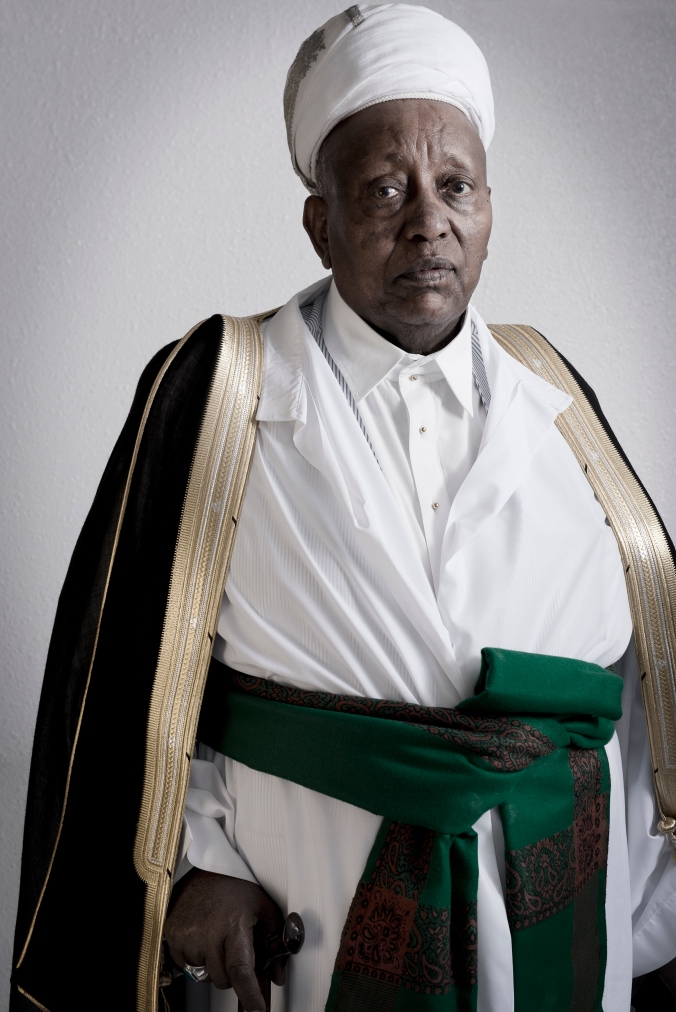
The
Guardians. Saeed Adam Omar (Late Sheikh of the Guardians) by Adel
Quraishi. Courtesy the artist & The Park Gallery, London
As his contribution to the Nour Festival, Saudi Arabian portrait photographer Adel Quraishi
has focused on what must be one of the most affecting groups available:
the handful of surviving Guardians of the Prophet’s burial chamber
at Medina. Prophet Mohammed lived, died and is buried there, and every
Muslim aims to visit the site at least once. Since the Ottoman Empire,
the keys to this holy site have been kept by eunuchs – originally from
Abyssinia, later wider in origin. They are eunuchs who entered the
role long ago, and are now at least 80 years old – one is said to be
110, which would fit with research suggesting that reduced testosterone
gives eunuchs increased life expectancy. Nonetheless, three of the eight
pictured in 2014 have died since the photographs – the only ones ever
permitted – were taken, and only three remain fit to carry out their
full duties. The Guardians are eunuchs, not because they have access to
women’s accommodation, but for the spiritual aspect of a faith that is
undistracted by sexual desire and uninfected by ritual impurity. They
are revered as mediators who cross boundaries, and there’s also a sense
in which time is suspended for them, as they have never gone through the
changes of adolescence. That state matches the suspension of time said
to occur in the well-preserved state of the Prophet’s body.
No new Guardians are being taken on, so where once there were
hundreds responsible for all aspects of running the mosque complex, the
remaining few spend their days in a small room connected to the burial
chamber itself. They pray, clean the floor with rosewater and look after
the set of keys which must be used in a closely-guarded sequence to
access the chamber. Even Quraishi was not allowed to photograph the
keys, but he was able to take an image of the chamber through which a
constant stream of pilgrims pass: we see the architectural and
decorative detail, but a long exposure time converts the worshippers to
abstract marks passing through. Quraishi’s project, then, makes the most
of the photograph as record: to look at the eight faces ranged – life
sized or somewhat larger – around the ideally suited dimensions of
Leighton House’s contemporary exhibition gallery is to look at the only
pictures ever taken of an 800 year tradition which is set to disappear.
So how do the eight portraits operate as images? The late Sheikh (or
Chief) among them, Saad Adam Omar, and his successor, Nouri Mohammed
Ahmed Ali, look to have a more assertive presence than the other six,
among whom there is less sense of personality. These are pious and
self-effacing men, who have spent at least the past 60 years in
ritualised routine. Quraishi describes them as humble and balanced men
who put him at ease. They come across as dignified, but subordinate to
their roles. Quraishi could have emphasised this by employing a serial,
standardised set-up in the manner of the Bechers. However, though the
octet are all shown against a plain white background (as photographed in
their small and little-used office) and though all prints are an
imposing 191 x 135cm (commensurate with important subjects), there is
considerable variation. The scale at which the Guardians are shown, the
degrees of crop, and their poses all vary. So do their clothes: they
wear state dress, but have no uniform as such, nor is there any
indication of rank: they are given a new robe each year, and choose
which one to wear and with what. All wear a green belt, visible in
several photographs and characteristic of Medina (whereas their
equivalents in Mecca wear red belts). Otherwise, the colours are
restrained: browns, golds, whites.
The portraits, then, are more varied than might be expected, but only
to set you wondering: is that an indicator of the men’s underlying
variation, or the extent of it? The effect might be contrasted with Thomas Ruff’s passport-style photographs, which pretend to impose uniformity on a patently disparate group; or with August Sander’s People of the 20th Century, which revolves around the range of jobs performed. Overall, The Guardians is a compelling representation of the totality of a rare group, and Leighton House Museum,
with its Arab Hall lined with an extensive collection of Islamic tiles,
is an appropriate and atmospheric location for it. That the portraits
were taken at all made that impact likely; and though Quraishi could
undoubtedly have carried the project out differently, the way he has
done enhances the effect.

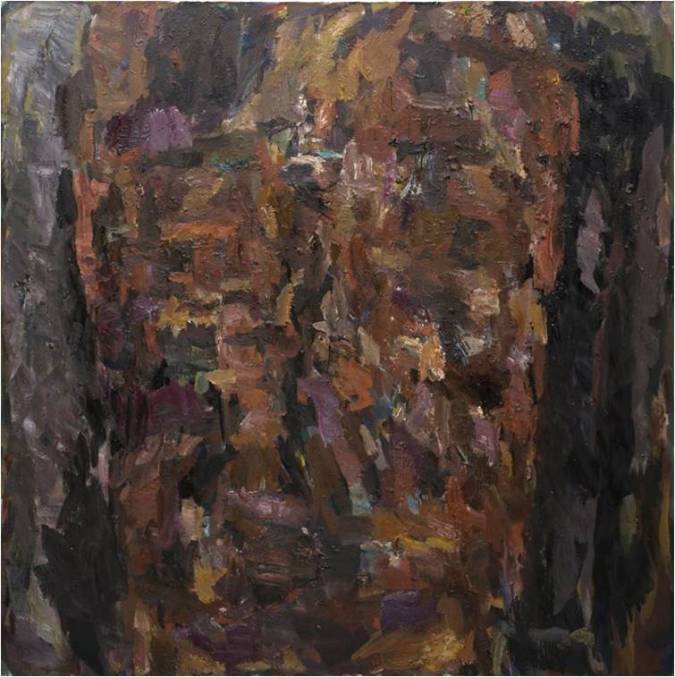
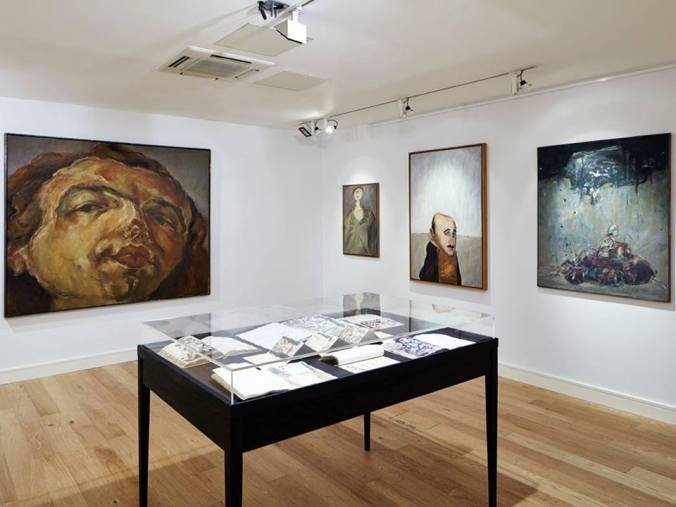

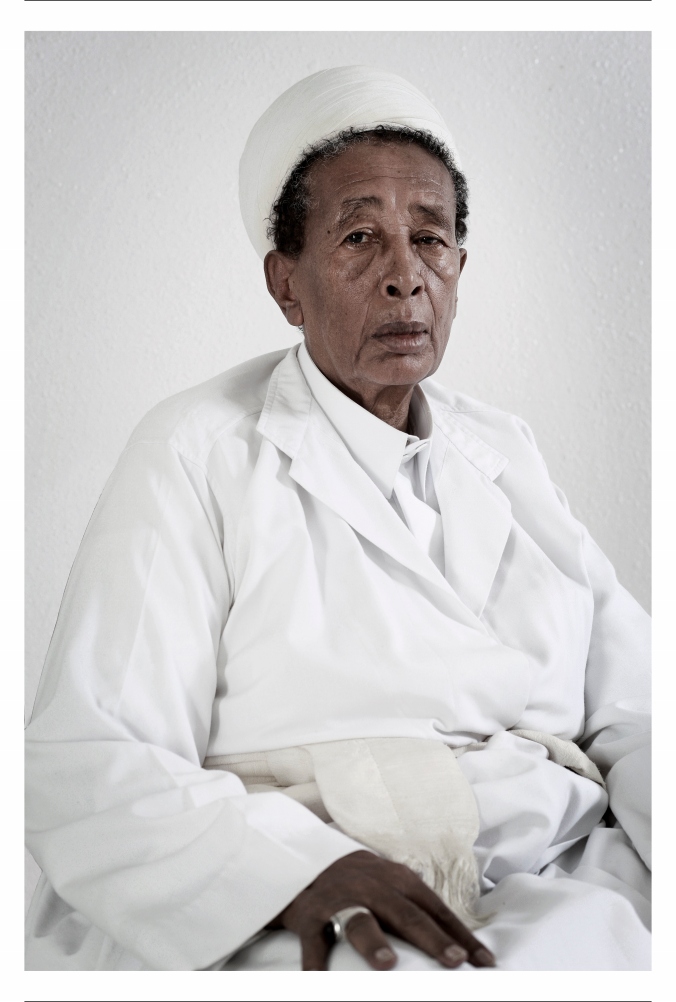

No comments:
Post a Comment
Note: only a member of this blog may post a comment.